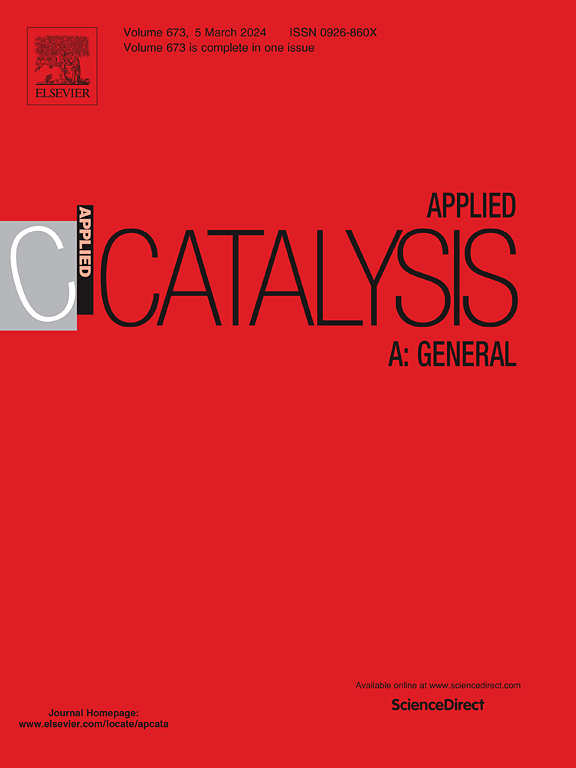氮化碳氧还原途径对H2O2光合作用增强的调控
IF 4.7
2区 化学
Q2 CHEMISTRY, PHYSICAL
引用次数: 0
摘要
利用无穷无尽的太阳能,光催化氧还原反应(ORR)在石墨氮化碳(CN)上生成H2O2被认为是一条绿色可持续的途径。然而,这一过程受到单电子转移过程副反应的限制,从而降低了整体效率。本文提出了一种通过调节氧还原途径来优化H2O2光合作用的有效方法。即在NaBH4的存在下,通过引入氰基和N缺陷对CN进行修饰。优化后的BCN光催化剂H2O2产率为570 μmol/g/h,效率提高了11倍。机理分析证明,在BxCN中,原始CN的单电子氧还原发生了向双电子的转化,这有助于提高ORR效率,加速H2O2光合作用中O2•−的转化。本研究揭示了一种通过调节氧还原反应途径来优化H2O2光合作用的有效方法。本文章由计算机程序翻译,如有差异,请以英文原文为准。
Regulation of oxygen reduction pathway on carbon nitride for enhanced H2O2 photosynthesis
Photocatalytic oxygen reduction reaction (ORR) to produce H2O2 on graphitic carbon nitride (CN) has been regarded as a green and sustainable route by using endless solar energy. However, this process is limited by side-reactions of single electron transfer process, thus decreasing the overall efficiency. Herein, we have proposed an effective method to optimize H2O2 photosynthesis by modulation of oxygen reduction pathway. That is modification of CN by introducing cyano groups and N defect in the presence of NaBH4. The H2O2 production rate was 570 μmol/g/h by the optimal photocatalyst of BCN, showing 11-fold enhanced efficiency. Mechanism analysis proved that the convert of the single electron oxygen reduction in pristine CN into two-electron pathway in BxCN occurred, which contributed to improved ORR efficiency and accelerated conversion of O2•− on H2O2 photosynthesis. This work revealed an effective method for optimizing H2O2 photosynthesis by regulating oxygen reduction reaction pathway.
求助全文
通过发布文献求助,成功后即可免费获取论文全文。
去求助
来源期刊

Applied Catalysis A: General
化学-环境科学
CiteScore
9.00
自引率
5.50%
发文量
415
审稿时长
24 days
期刊介绍:
Applied Catalysis A: General publishes original papers on all aspects of catalysis of basic and practical interest to chemical scientists in both industrial and academic fields, with an emphasis onnew understanding of catalysts and catalytic reactions, new catalytic materials, new techniques, and new processes, especially those that have potential practical implications.
Papers that report results of a thorough study or optimization of systems or processes that are well understood, widely studied, or minor variations of known ones are discouraged. Authors should include statements in a separate section "Justification for Publication" of how the manuscript fits the scope of the journal in the cover letter to the editors. Submissions without such justification will be rejected without review.
 求助内容:
求助内容: 应助结果提醒方式:
应助结果提醒方式:


